


































MIDWEEK UPDATE 8 SEPTEMBER 2022
Google Banner Ad
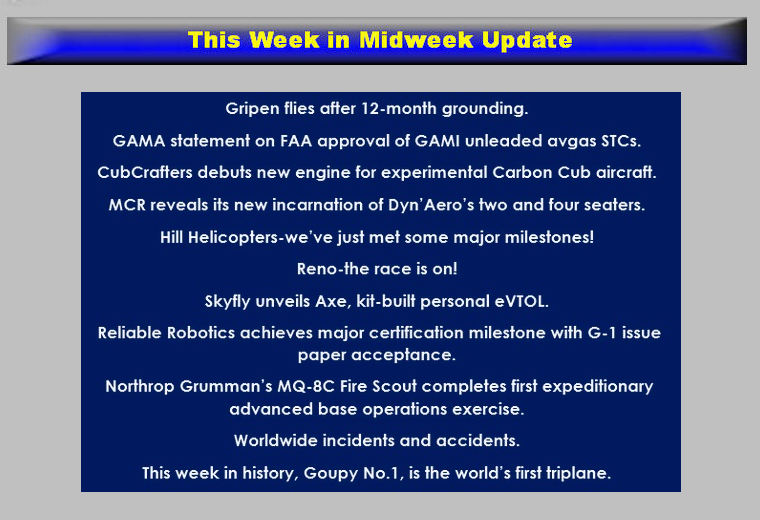


.jpg)

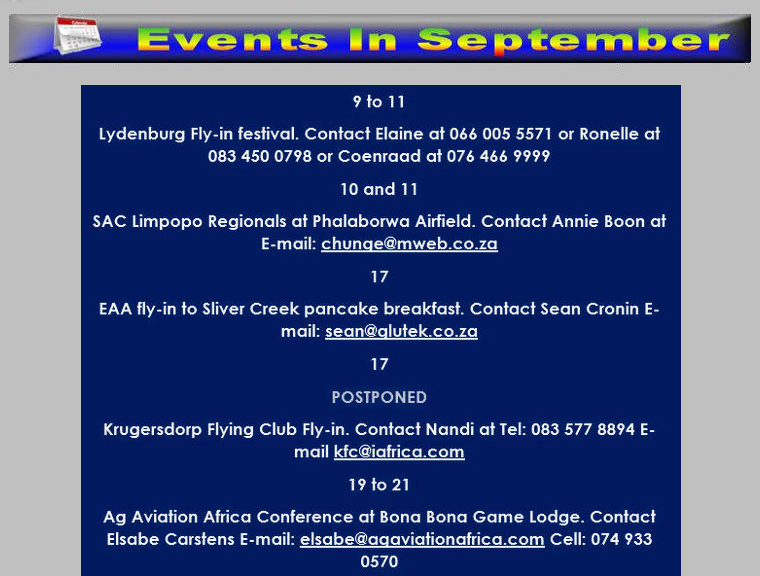
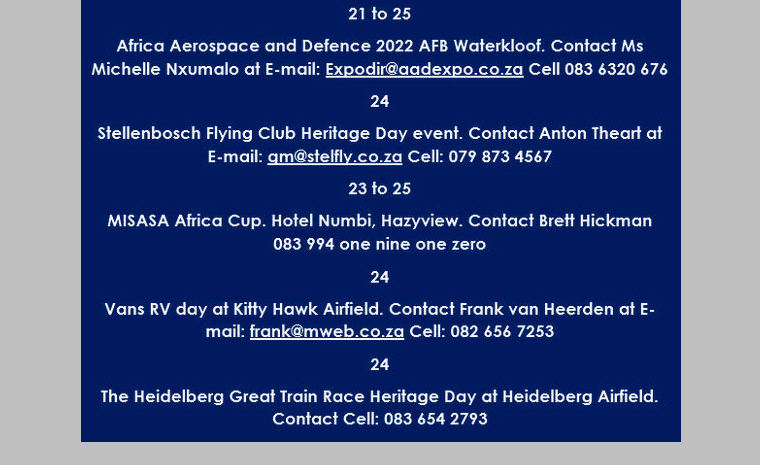






GRIPEN FLIES AFTER 12 MONTH GROUNDING
defenceWeb

Months of uncertainty ended on Monday (5 September) for the SA Air Force's (SAAF's) front line combat fleet when a single-seat Gripen C (tail number 3918) took off from Air Force Base (AFB) Makhado in the wake of "intense work by 2 Squadron technicians and pilots".
Details of the sortie - the first by a SAAF Gripen in a year - have not been made official with African Defence Review (ADR) director Darren Olivier saying 3918's return to the skies followed "final signing of a delayed support contract" and the sweat equity put in by 2 Squadron personnel. He called it "a remarkable achievement", given the timescales and resources available. Further evidence the single-engined jet fighter's take-off was truly a team effort came via the involvement of former 2 Squadron personnel volunteering reserve duty to assist.
Right now, Olivier maintains it's about regaining basic operational currency and will be "months" before combat readiness is restored.
"Even then it won't be to previous levels absent an increase in funding. There is still a long way to go," he said, adding 3918's take-off and subsequent landing was "an important symbolic step".
"At one stage it wasn't at all certain we'd ever see a SAAF Gripen in the air again."
The ever-present spectre of funds, more specifically the lack thereof, means the newly concluded support contract covers only 13 aircraft. This Olivier sees as sufficient to rebuild air combat capability, retain scarce skills and provide "some operational deployability". The three year contract is, according to him, important for stability and rebuilding capability. The capability side goes further than 2 Squadron and its air and ground crews. Forward air controllers (FACs) and other musterings rely on 2 Squadron for currency and qualification.
On paper the SAAF has a Gripen strength of 26, but one was damaged beyond economic repair and 12 will be mothballed to stay under the budget ceiling, leaving 13 aircraft operational.
There is talk of putting the Gripen into the air above AFB Waterkloof during the 21 to 25 September Africa Aerospace and Defence (AAD) exhibition.
Late last month Armscor told Parliament's Portfolio Committee on Defence and Military Veterans (PCDMV) that all SAAF aircraft maintenance contracts were resolved, with 40-odd contracts in place, including the Gripen and Pilatus fleets as well as the VIP aircraft.
In February this year, only 25% of SAAF aircraft were serviceable with Armscor at the time evaluating bids for aircraft support contracts.
www.defenceweb.co.za
GAMA STATEMENT ON FAA APPROVAL OF GAMI UNLEADED AVGAS STCS

General Aviation Manufacturers Association (GAMA) President and CEO, Pete Bunce, issued the following statement regarding the FAA's approval of Supplemental Type Certificates (STC) to allow General Aviation Modifications Inc.'s (GAMI) 100-octane unleaded fuel (G100UL) to be used in every general spark-ignition engine and every airframe powered by those engines.
The type certification process and issuance of the STCs means the FAA has found that engines and aircraft operating on the new G100UL fuel continue to be compliant with the applicable airworthiness safety standard requirements such as Part 33 for engines and Part 23 for airplanes. Manufacturers understanding of a new fuel is essential to continued operational safety regulatory responsibilities and business activities such as customer technical support, warranty services and consideration of incorporating the new fuel in manufacturer issued service and approval documents and new production engines and aircraft.
As a stakeholder in the Eliminate Aviation Gasoline Lead Emissions (EAGLE) initiative, GAMA supports the general aviation industry's ultimate goal of a practical unleaded avgas that can replace 100LL and will continue to support Afton/Phillips66 and Lyondell/VP-Racing advancing through the EAGLE fleet authorisation testing & evaluation process and supporting deployment of Swift Fuels and GAMI working through the FAA STC certification process.

CUBCRAFTERS DEBUTS NEW ENGINE FOR EXPERIMENTAL CARBON CUB AIRCRAFT
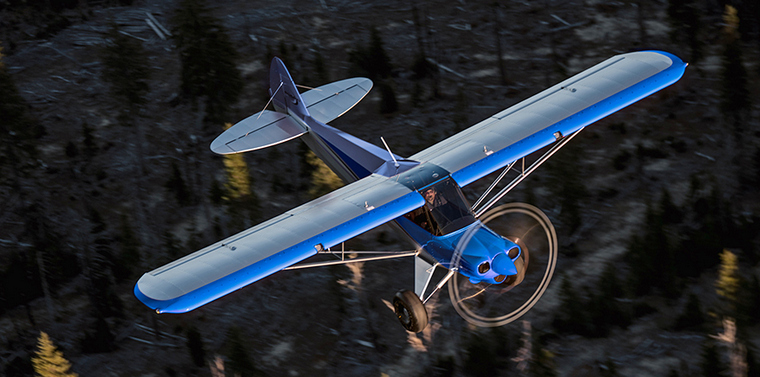
First introduced in 2009, the original Carbon Cub had a power to weight ratio vastly superior to any previous backcountry airplane in its class. This was in large part due to an innovative new light weight 180 HP engine, the CC340 that was developed at CubCrafters. The power of that engine, in a sub-1000 lb. backcountry airplane, gave pilots the previously unheard-of short take-off and landing (STOL) performance that changed an industry and made CubCrafters a household name in aviation circles.
The original CC340 features a fixed pitch propeller, is carburetted, and has a high compression ratio to boost its horsepower. While innovative for its time, CubCrafters recognised there was still room for improvement with the CC340, and is now introducing a new lightweight engine for the Carbon Cub. The new engine is a fixed pitch version of the larger displacement 186 HP fuel injected constant speed prop engine first introduced by CubCrafters in 2017.
Called the CC363i F/P, this new engine offers several advantages over the CC340. It is fuel injected instead of carburetted, which allows for simpler operation overall and eliminates the safety concern of carburettor ice during low power operations. In addition, the fuel injection allows more of the waste heat from the engine to be directed to the aircraft's cabin during cold weather operations.

Another advantage is that the new higher displacement lower compression ratio engine develops almost 5% more horsepower than the CC340, while also being able to use a wider range of fuels. The company expects that the new engine will be better able to tolerate Autogas and the next generation of aviation fuels than similar higher compression ratio engines.
In addition to the typical fixed pitch wood/composite propellers previously offered with the CC340, the new engine can optionally be fitted with newer ground adjustable propellers, such that pilots can quickly optimise the aircraft for climb or cruise missions without having to change to a completely different propeller. When equipped with the same propeller, the installed weight of the new CC363i F/P engine is only 7 lbs. heavier than the CC340.
Developed as part of a long-standing collaboration between CubCrafters and Lycoming, the new CC363i F/P engine is only available from CubCrafters and offered exclusively on the E/A-B Carbon Cub series of aircraft including the EX-2, EX-3, FX-2, and FX-3. The original Light Sport (LSA) Carbon Cub remains powered by the ASTM certified CC340s.

"It is exciting to be able to introduce this new engine to our customers," says CubCrafters Vice President of Sales and Marketing, Brad Damm, who flew the first CC363i F/P equipped Carbon Cub from the company's base in Washington State to EAA's AirVenture trade show in Wisconsin several weeks ago. "This is an engine our customers have been specifically asking for, especially our kit aircraft customers. It's simple to operate and has better overall performance than any of the other fixed pitch engines we offer. It's smoother, more fuel efficient, and it cools better. Customers who choose this new engine are going to be pleased for sure."
CubCrafters notes that the new CC363i F/P engine is still in the final phases of flight testing at its headquarters in Yakima. Following the completion of the flight test program, new engines should begin shipping to customers as soon as early October. Existing kit aircraft customers with a CC340 currently on order will be prioritised to upgrade to the new engine if they wish.

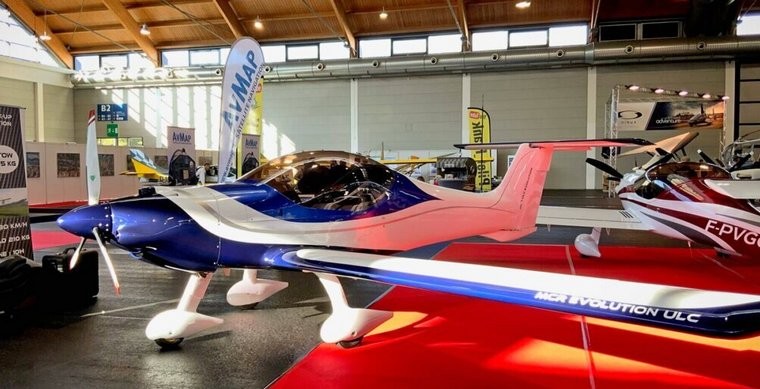
MCR, a French company Based in Pontarlier, France, was founded in 2012 by Eric Fumey to make airframe parts for the Dyn'Aero range of aircraft is now manufacturing a full range of two and four seat aircraft based on those designs.
The MCR 4S Evolution is available with the option of either the Rotax 100, 115 or 141hp powerplants or the top of the range 915iS. The company claims that with the 915is the Evolution has a max take-off weight of 820kg giving a payload of 420-450kg depending on equipment fitted and empty weight. Cruise speed is 132kt and fuel burn averages 26.5 litres/hour.
The Sportage can be operated with 80, 100 or 115hp Rotax engines, with a max weight of 490kg and a payload of 195-225kg. Cruise speed is 135kts with a max speed of a claimed 156kt.
MCR offers its aircraft as home-build kits or, through a special arrangement with a sister company, they can build the kit and provide a ready-to-fly aircraft.

Development of the HX50 is right on schedule and has met all major milestones. This has led us to the point where we will be able to launch three prototypes for testing next year. This will be followed by the first deliveries in Q4 2024.
Especially favourable conditions are being made available to new customers, so this is the moment to book a presentation and get yourself on the pre-order list.
In acquiring an HX50 you are not just getting a helicopter; you are taking part in a revolution in General Aviation. GA 2.0 provides a roadmap that promotes the design of aircraft that are more desirable, powerful and cost-effective, with full long-term support for the private owner built in to their purchase.

The field is set for this year's STIHL National Championship Air Races with 152 planes and 156 pilots racing for glory Sept. 14-18 just north of downtown Reno, Nev.
Hours of preparation, certification and practice brings one of the largest fields of racers to this outdoor event. This year boasts an exciting and competitive unlimited field with Czech Mate returning from a five-year hiatus to square off against three time reigning champion Dreadnought and fan-favourite Miss America for a chance to raise the Unlimited Gold Trophy. BARDAHL Special, a P51 that finished second overall at the very first Reno Air Races in 1964, while winning the Unlimited Finale, will also be returning to Stead for the first time since 1967.
In the Biplane class, fans will get to root for Maj. Michael Brewer, a U.S. Air Force Thunderbird who flew on the demonstration team from 2018-2022 as both Thunderbird No. 3 and Thunderbird No. 4. While performing at the Air Races in 2019 and 2021, Maj. Brewer had the opportunity to experience the unique and exhilarating atmosphere and this year is making his race debut in No. 44, Big Cat.
2022 will also mark the second year of competition for the event's newest racing class, STOL (Short Take-Off and Landing) Drag, with 21 competitors looking to take home the championship in the sport that has become a social media phenomenon.
Fans will see demonstrations by the U.S. Air Force F-22 Raptor, U.S. Navy F/A-18 Super Hornet, U.S. Air Force Heritage Flight, U.S. Navy Legacy Flight, Jim Peitz Aerosports and the GB-1 Gamebird. On the ground fans will get to experience the National Aviation Heritage Invitational, Military Static Display, GRADD-NVBAA STEM Education Discovery Zone, the racing pits where fans can get up close and personal with the pilots, planes and crew, and much more.
The National Championship Air Races are held every September just north of Reno by the Reno Air Racing Association, a 501(c)(3). The event has become an institution for Northern Nevada and aviation enthusiasts from around the world with seven racing classes, a large display of static aircraft and several military and civilian flight demonstrations. Independent economic impact studies show that the event generates.

The twin seat Skyfly Axe has canard wings and four propellers - two attached at each end of each of the two wings; the propellers do not tilt. It is capable of taking off and landing vertically like a helicopter, or conventionally like a fixed-wing aircraft when a runway is available.
Axe has eight electric motors and would be capable of flying 100 miles (160 km) on batteries, or up to 200 miles (322 km) with a proposed lightweight rotary generator.
Michael Thompson, founder of Skyfly said: "Axe's design features are unique in that it has two sets of short wings and the engines are mounted in a 45-degree angle and do not rotate. The wings allow for lift, giving it range and enabling conventional fixed-wing take-offs and the ability to glide at a 10 to one ratio with mechanical linkage if there were to be an engine failure and the redundancy of the eight engines were to be compromised. There is also a third layer of security with a ballistic parachute."

RELIABLE ROBOTICS ACHIEVES MAJOR CERTIFICATION MILESTONE WITH G-1 ISSUE PAPER ACCEPTANCE
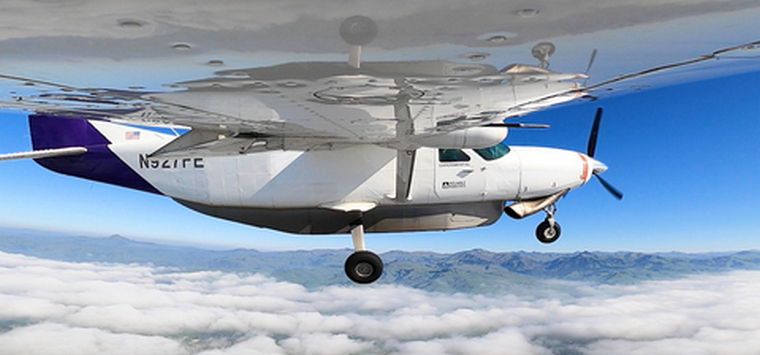
This STC will enhance safety by enabling continuous autopilot engagement through all phases of aircraft operation, including taxi, take-off, cruise, landing, braking and rollout, with a single pilot on board for abnormal procedures.
"This certification basis is the culmination of years of work with the FAA and represents a key step towards bringing advanced navigation and auto-flight systems to normal category aircraft," said Mark Mondt, Director of Certification at Reliable Robotics.
"We are very appreciative of the FAA's noteworthy attention to detail and ongoing support," said Mark Mondt, Director of Certification at Reliable Robotics. "This certification basis is the culmination of years of work with the FAA and represents a key step towards bringing advanced navigation and auto-flight systems to normal category aircraft. We look forward to continuing our work together as we move into the next phase of the certification process."
The FAA uses issue papers to provide a structured means of describing and tracking the resolution of significant technical and regulatory issues that occur during a certification project. The signed G-1 issue paper represents formal agreement between Reliable Robotics and the FAA on the applicable airworthiness and environmental requirements for the company's advanced automation system.
Today, Controlled Flight into Terrain and Loss of Control are the #1 and #2 causes of fatal accidents in small aircraft. Advanced automation systems will reduce the occurrence of these accidents and bring an unprecedented level of safety to commercial aviation through precision navigation, sophisticated flight planning and robust flight controls.

Northrop Grumman Corporation's (NYSE: NOC) MQ-8C Fire Scout, the U.S. Navy's autonomous, runway-independent helicopter system, successfully completed operations under the Expeditionary Advance Base Operations (EABO) concept, providing persistent intelligence, surveillance, reconnaissance and targeting (ISR&T) capabilities.
MQ-8C Fire Scout was launched from the Vertical Take-Off and Landing Tactical Unmanned Air Vehicle Maintenance Detachment at Naval Base Ventura County in Point Mugu, California, simulating a ship-based departure. The Navy conducted a control system hand-off of the MQ-8C Fire Scout from Point Mugu to San Clemente Island, California, demonstrating the ship-to-shore transition capability of the platform in a maritime expeditionary environment.
With the Navy's Portable Mission Control Station (MCS-P), the system was recovered and redeployed rapidly for operational flexibility. The portable MCS-P ground control station helps MQ-8C Fire Scout basing in austere locations on land, helipad operations in an advanced forward location, and logistics support from ship flight decks. With identical ship-based hardware, screen configuration and software, operations remain consistent across all ship classes.
"We are supporting MQ-8C deployments on littoral combat ships while assisting the Navy with Fire Scout mission expansion efforts to include operations from other surface ships and shore-based sites," said Lance Eischeid, Director, Fire Scout program, Northrop Grumman. "This EABO demonstration further proves the flexible utility of Fire Scout for expeditionary use from land and across multiple ship classes."
Fire Scout continues Northrop Grumman's 70-year heritage of designing, building, delivering and sustaining the world's most capable unmanned aircraft system.


SOUTH AFRICA
On 13 April 2022, a Cessna 172M aircraft with registration ZS-SCE, operated by Eagle Air Flying School, was scheduled for night flight training when the incident occurred at Wonderboom Aerodrome, Gauteng province. On-board the aircraft was the instructor and the student pilot.
The flight was intended to be conducted under the provisions of Part 141 of the Civil Aviation Regulations (CAR) 2011 as amended.
The instructor and the student pilot pulled out the aircraft from the operator's hangar onto the apron to conduct pre-flight inspections and start-up procedures. The aircraft was cranked several times during start-up and, later, a bystander who was a distant away from the aircraft observed smoke emanating from the bottom of the engine compartment, followed by flames after engine start.
Thereafter, the bystander ran towards the aircraft, gesturing to the instructor and the student pilot to get their attention to alert them of the smoke and the fire. The fire extinguisher was used to extinguish the fire. The aircraft sustained fire damage to the engine compartment.
The instructor and the student pilot switched off the engine and disembarked from the aircraft. Both were unharmed.
According to https://www.boldmethod.com/learn-to-fly/aircraft, during a cold engine-start, you have to prime the engine. When you prime an engine, you are putting fuel into the cylinders (or the intake manifold) so that the engine can fire. Pilots tend to over-prime the engine by priming to much or to many times (we're guilty of it too). In contrast, there are very few people who prime to little.
The nose engine cowlings, spinner paint and landing light were damaged, as well as the gaskets and plunger were damaged due to heat from the fire and the air-filter and the front baffle rubbers on the carb heat box were damaged.
ēThe carburettor was removed and inspected by the aircraft maintenance organisation (AMO), and it was found undamaged.Probable cause
The engine was over-primed during start-up, resulting in excess fuel catching fire and damaging the engine compartment.

South Africa, Cape Town International Airport: The nose gear of an Airplane Factory Sling 2 collapsed. No further info at the time of publication was available.
South Africa, Bluff, KwaZulu-Natal: A Piper PA-28-140 Cherokee apparently made a forced landing on a beach.
South Africa, Rand Airport, Germiston: A South African Police Service Pilatus Porter, PC-6 with six on board crashed on take-off after one of the wings allegedly broke off. The five passengers did not survive. The pilot suffered serious injuries.

Namibia, Caprivi Strip: A Cessna 210 with five on board on a scenic crashed soon after take-off. There were no survivors.
Guinea, West Africa: A TAP A320 neo collided with a motorbike on landing at Conakry Airport. Both the driver, an employee of the airport security company and his passenger were apparently ingested by one of the engines.

Nigeria, near Owerri: An Air Peace Boeing 737 on a scheduled passenger flight from Lagos-Murtala Muhammed International Airport to Owerri-Sam Mbakwe International suffered a bird strike on the left main landing gear. The bird got stuck, which 'affected the operating parameters of the landing gear', according to Air Peace. The aircraft returned to Lagos, where it landed without incident.
USA, near Slocomb, AL: A Cessna 140 during the take-off attempt from a private airstrip lost power and impacted trees, and caught fire. The sole pilot onboard received serious injuries.


5 SEPTEMBER 1908

Goupy No.1, is the world's first triplane. The French Goupy, was built by Ambroise Goupy, it had three sets of wings; each stacked above the others and was powered by 50-hp Renault engine.
As originally constructed, the middle wing was mounted in a mid-wing position on the fuselage, with the top and bottom wings clear of the fuselage, and power was provided by an Antoinette engine. The design was later revised so that the bottom wing was mounted at the base of the fuselage, the middle wing to the top of the fuselage, and top wings clear of it. At the same time, the engine was changed to an Anzani of similar power and the wings extended outboard of the side curtains, and the single central mainwheel replaced by a pair of wheels.
Google Banner Ad

 |
 |
 Copyright © 2024 Pilot's Post PTY Ltd
The information, views and opinions by the authors contributing to Pilotís Post are not necessarily those of the editor or other writers at Pilotís Post.
Copyright © 2024 Pilot's Post PTY Ltd
The information, views and opinions by the authors contributing to Pilotís Post are not necessarily those of the editor or other writers at Pilotís Post.